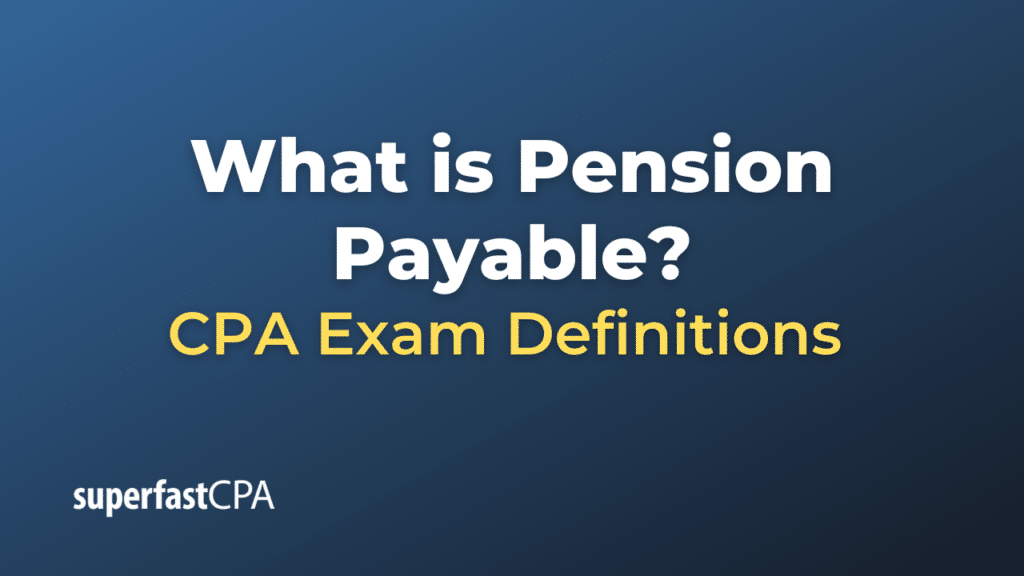Pension Payable
Pension payable is a liability that represents the amount a company is obligated to pay to its retired employees as part of their pension benefits. It is the portion of the company’s pension obligations that are due to be paid in the short term, typically within the next accounting period (usually the next year).
When a company has a defined benefit pension plan, it must estimate the amount it will need to pay out in pensions in the future. This calculation takes into consideration factors such as the number of employees, years of service, retirement age, life expectancy, and other aspects of the pension plan. The resulting figure is the company’s total pension liability.
However, only a portion of this total liability is due to be paid in the short term. This short-term obligation is recorded on the balance sheet as “pension payable. It represents the payments that the company expects to make to its retired employees over the next accounting period. The remainder of the pension liability, which is due to be paid in the long term, is usually recorded separately on the balance sheet.
Like other payables, pension payable decreases when payments are made to retirees. If the company’s pension obligation increases (for example, due to changes in the pension plan or actuarial assumptions), the pension payable might also increase.
Note: Pension accounting can be quite complex and is subject to specific accounting standards and regulations. Different countries may also have different rules for how pension payable is calculated and reported. The information provided here is a simplified explanation and may not cover all aspects of pension payable accounting.
Example of Pension Payable
Let’s say Company X has a defined benefit pension plan for its employees. After consulting with actuaries and reviewing its pension plan details, the company estimates that it has a total pension liability of $5 million, which represents the present value of all future pension payments it expects to make to its employees.
This total pension liability is divided into two parts:
- The long-term pension liability, which represents the pension payments that will be made more than one year in the future.
- The pension payable, which represents the pension payments that are due within the next year.
Let’s assume that Company X expects to pay $300,000 in pension benefits to its retirees over the next year. This amount is recorded as “pension payable” on the balance sheet. The remainder of the pension liability, which is $4.7 million ($5 million – $300,000), is recorded as “long-term pension liability”.
During the next year, as Company X makes pension payments to its retirees, the pension payable will decrease. If the company’s total pension liability changes (due to changes in the pension plan or actuarial assumptions), the pension payable may also be adjusted.
Again, this is a simplified example. In practice, the calculation of pension payable can be more complex and would include other considerations, such as changes in the pension plan, actuarial gains or losses, and the return on the plan’s assets.













